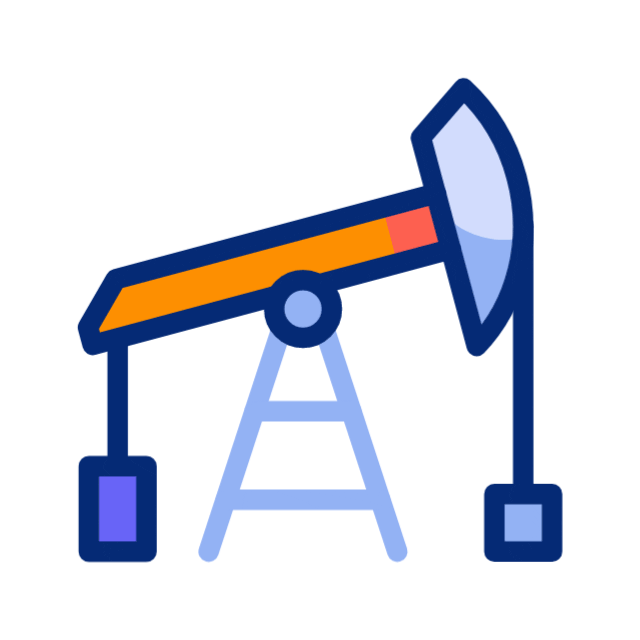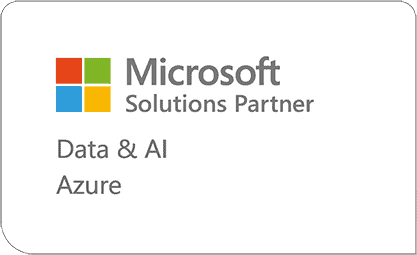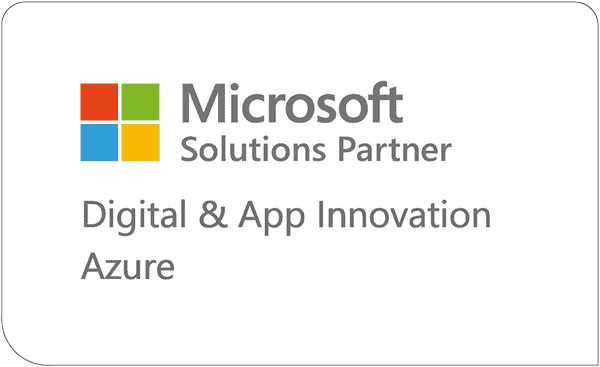Power BI in Oil & Gas Finance: 4 Real-World Examples
Explore 4 real-world Power BI examples tailored for oil and gas financial teams, plus a look at how new translytical task flows are helping analysts go from insight to action without leaving their dashboards.
Financial teams in the oil and gas (O&G) industry face a perfect storm of complexity. They must juggle wildly fluctuating commodity prices, strict regulatory reporting, and intricate joint venture arrangements all while managing massive capital projects and operating costs. In the past, much of this financial data lived in siloed spreadsheets or overnight batch reports, leading to delays and inconsistencies. Relying on stale data can undermine decision-making and even lead to budget overruns or cash shortfalls.
This is where Microsoft Power BI (now natively integrated to the Fabric ecosystem)makes a critical difference. By unifying data from multiple sources into a single source of truth, Power BI provides a shared analytics platform where everyone can spot trends and outliers in real time.
Below, we’ll explore five concrete examples of how Power BI dashboards and tools help O&G finance teams work smarter. We’ll also look at a new Power BI feature: translytical task flows, which allow finance professionals to not only analyze data but also take action from within their reports.
CapEx vs OpEx Dashboard
Capital expenditures (CapEx) and operating expenses (OpEx) are the lifeblood of O&G finance. Tracking these two types of expenditure side by side is crucial for project planning and cost control. A CapEx vs OpEx Power BI dashboard gives finance teams instant visibility into how much is being invested in long-term projects (like new drilling rigs or facilities) versus day-to-day operational costs. Financial reporting in project-driven businesses should track CapEx vs OpEx in real time to prevent budget overruns.
In practice, a Power BI dashboard can pull together budget and actual expenditure data from ERP systems to highlight variances. For example, finance managers can see year-to-date CapEx by project compared to budget, alongside operating costs by region or department. Interactive visuals can make it easy to drill down. A CFO might click on a particular project to see its CapEx burn rate and remaining budget, then switch views to see related OpEx like maintenance or labor costs. This clarity helps O&G companies prioritize their spending and adjust plans proactively.
In short, a CapEx vs OpEx dashboard in Power BI turns a once tedious reporting process into an at-a-glance insight: ensuring that capital projects stay on track and operational expenses don’t erode the bottom line.
Revenue Forecasting by Production Volume
Revenue forecasting in oil and gas is uniquely tied to production volumes and commodity prices. Essentially, how much oil or gas you produce and at what price directly drives revenue. Power BI helps finance teams connect these dots in an interactive, visual way.
A revenue forecasting dashboard might combine daily production data (e.g. barrels of oil equivalent per day) with pricing assumptions to project future revenue. For instance, finance analysts can use Power BI to model “what-if” scenarios: If daily production increases by 10% next quarter, and oil prices average $X per barrel, what will our revenue look like? By linking live production feeds (from systems like SCADA) to financial models, Power BI enables near real-time forecast updates. This is crucial in such a volatile market like oil and gas where prices can swing dramatically. Finance leaders need a tool to help them adjust profitability models and manage cash flow swiftly and responsively.
Power BI’s built-in forecasting tools (and support for R/Python scripts) allow teams to apply predictive analytics on historical production and price data, generating forward-looking trends with confidence intervals. Additionally, dynamic visuals can show how forecasted revenue stacks up against targets or prior periods. External factors can be factored in too: for example, incorporating a scenario where oil prices drop sharply to see the impact. Modern financial platforms emphasize capabilities like rolling forecasts and impact simulations for market scenarios (e.g., sudden oil price drops). A Power BI report can present these simulations in an easy-to-digest format for executives.

Joint Venture Cost Tracking
Joint ventures are common in oil and gas – multiple companies often share ownership of a field or even a pipeline. For finance teams, this means tracking costs and revenues for each venture and each partner’s share, which can turn into a headache due to its complexity. Power BI can streamline joint venture (JV) cost tracking by consolidating data into a single, interactive report. Instead of manually reconciling spreadsheets for each partner, a Power BI JV dashboard can pull from accounting systems, like Joint Interest Billing (JIBs) and other modules and show all relevant metrics in one view.
As an example, finance can see total project expenditures to date and automatically calculate each partner’s percentage share of those costs. If your company is the operator, you might have a visual that displays amounts billed to partners versus payments received, highlighting any outstanding balances. O&G companies often manage dozens of JVs across different regions and currencies, so having a unified dashboard is crucial. With Power BI, users can filter by venture or partner to drill into specifics such as examining why a particular joint project is running over budget or how timing differences in cash calls are affecting the operator’s cash flow.
Notably, the dashboard can also blend in operational data (like well production or project progress) alongside financial figures, giving context to the spending. The result is improved transparency and control: both your finance team and JV partners can trust that they’re looking at the same single source of truth for cost allocations and variances. By providing clarity on “who owes what” and where the money is going, Power BI helps de-risk the financial management of joint ventures. This level of tracking fosters accountability among partners and ensures that no expenses fall through the cracks which is a must for maintaining strong business relationships and compliance in multi-company projects.
Executive-Level Financial KPIs Across the Portfolio
Top executives (CEOs, CFOs, and VPs) need a high-level view of financial performance across the entire O&G portfolio. Power BI is ideal for delivering an executive dashboard that aggregates key performance indicators (KPIs) from all segments of the business. Unlike static slide decks, a Power BI executive dashboard is interactive and always current, allowing leaders to drill down if they spot something of interest. A well-designed executive dashboard might present, on a single screen, metrics such as total revenue vs budget, net income or EBITDA, cash flow, and capital expenditure utilization.
Using Power BI, data from different sources (financial ledgers, production systems, market prices) can be combined to provide that holistic view. For example, an executive could see that while overall revenue is on track, one region is lagging due to lower production, or that operating margin has dipped because operating costs spiked in a certain field.
Another benefit is the ability to customize views for different leaders: a COO might focus on operational efficiency metrics, whereas the CFO sees liquidity and profit metrics. Power BI’s security roles can tailor what each exec sees, all from the same underlying dataset. Finally, sharing and accessibility are key: with Power BI, these live dashboards can be accessed securely on any device, and even embedded in collaboration tools like Microsoft Teams or exported to PowerPoint for board meetings. In short, an executive-level KPI dashboard in Power BI acts as the command center for decision-makers, distilling complex data into clear indicators and enabling data-driven strategy across the portfolio.

Translytical Task Flows: Taking Action from Inside Power BI
One of the most exciting new capabilities in Power BI is the introduction of translytical task flows (currently in preview). In essence, translytical task flows blur the line between analytics and action, allowing finance users not only to analyze data but also to initiate transactions or workflows directly within a Power BI report. According to Microsoft’s documentation, translytical task flows let end users automate actions like updating database records, adding comments, or even triggering external system workflows all from the report interface. This is a game-changer for finance professionals in oil and gas who often find insights in a report and then have to switch systems to act on them.
With translytical task flows, that gap is closed. Imagine a Power BI report showing a list of capital projects with their budgets and actuals. A finance analyst notices one project’s OpEx is exceeding budget. Instead of sending an email or opening an ERP application, the analyst can use a translytical task flow button in the report to take action – perhaps flagging the variance and writing back an updated forecast or a justification note to a database. Power BI could present an input form (using the new slicer visuals for text or list input) where the analyst enters a revised OpEx forecast or an annotation. When they hit “Submit,” the data is written back to the underlying database and instantly reflected in the report visuals. In the background, this is powered by Fabric “user data functions” that securely execute the update. The result: the finance team can correct course or log insights without leaving Power BI.
Power BI and O&G Finance Teams: Best Tandem Ever
Oil and gas finance professionals operate in one of the most dynamic and data-rich environments in the business world. Power BI has proven to be an indispensable ally for navigating this landscape. From the practical dashboards that track CapEx vs. OpEx, forecast revenue, manage joint venture costs, monitor cash flow, and summarize enterprise-wide KPIs, to cutting-edge innovations like translytical task flows that enable real-time write-back and workflow automation, Power BI is reshaping how O&G companies approach financial analysis.
Power BI provides that edge by turning data into decisions at every level of the organization. Finance teams no longer have to spend most of their time gathering or reconciling data anymore; instead, they can focus on strategy, backed by a single version of the truth and powerful analytical tools. In a field where success is measured in both barrels and dollars, Power BI has become indispensable for modern financial analysis, empowering oil and gas companies to run leaner, react faster, and drive their business forward with confidence.
Looking for more on data & analytics?
Explore more insights and expertise at smartbridge.com/data
There’s more to explore at Smartbridge.com!
Sign up to be notified when we publish articles, news, videos and more!
Other ways to
follow us:




